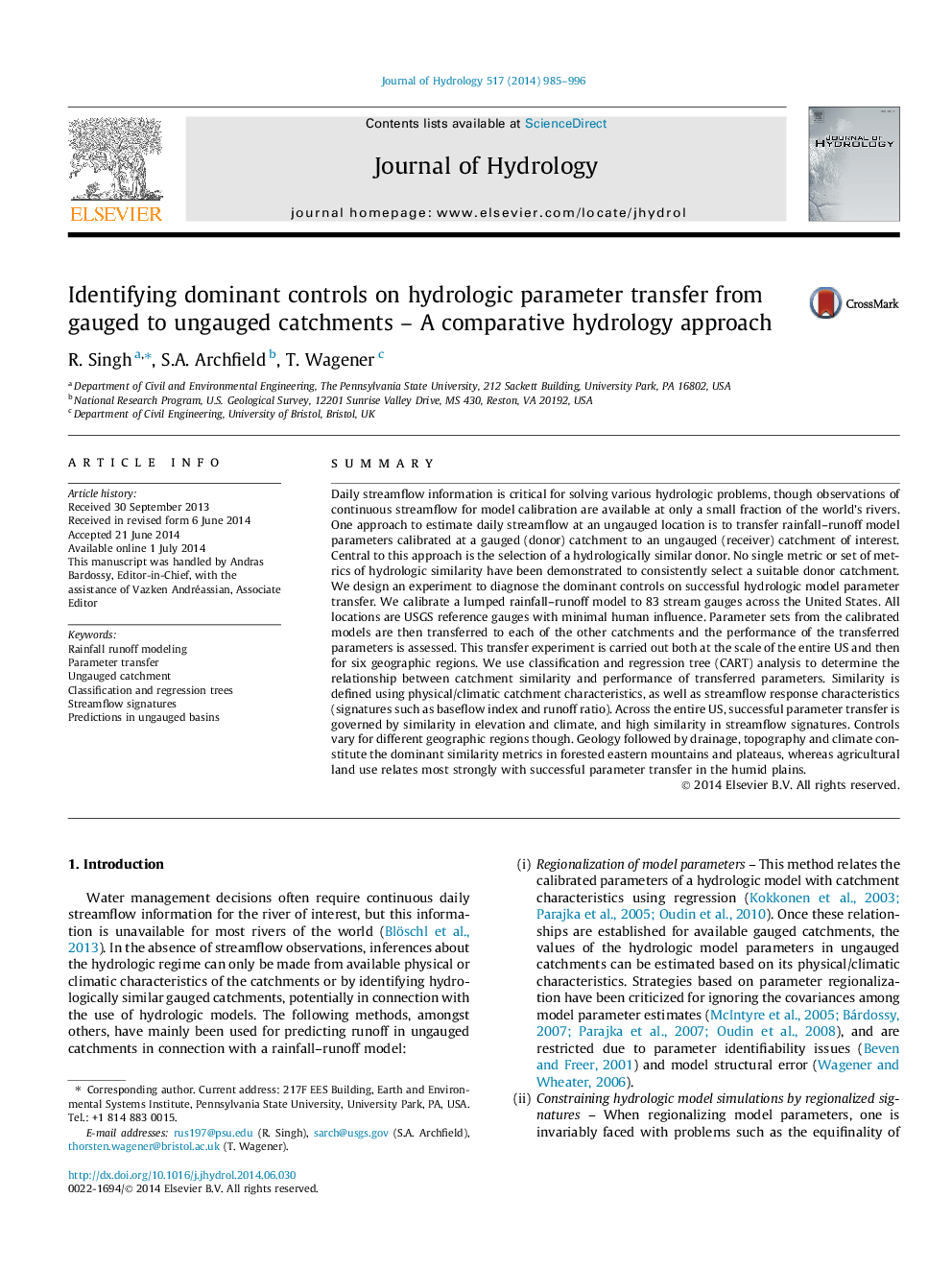| کد مقاله | کد نشریه | سال انتشار | مقاله انگلیسی | نسخه تمام متن |
|---|---|---|---|---|
| 6413077 | 1629931 | 2014 | 12 صفحه PDF | دانلود رایگان |
- Performance of transferred parameters is related to similarity in catchment properties.
- Classification and regression trees are used to explore this relationship in 83 US catchments.
- Climate, elevation and agricultural land use are dominant controls on parameter transfer success.
SummaryDaily streamflow information is critical for solving various hydrologic problems, though observations of continuous streamflow for model calibration are available at only a small fraction of the world's rivers. One approach to estimate daily streamflow at an ungauged location is to transfer rainfall-runoff model parameters calibrated at a gauged (donor) catchment to an ungauged (receiver) catchment of interest. Central to this approach is the selection of a hydrologically similar donor. No single metric or set of metrics of hydrologic similarity have been demonstrated to consistently select a suitable donor catchment. We design an experiment to diagnose the dominant controls on successful hydrologic model parameter transfer. We calibrate a lumped rainfall-runoff model to 83 stream gauges across the United States. All locations are USGS reference gauges with minimal human influence. Parameter sets from the calibrated models are then transferred to each of the other catchments and the performance of the transferred parameters is assessed. This transfer experiment is carried out both at the scale of the entire US and then for six geographic regions. We use classification and regression tree (CART) analysis to determine the relationship between catchment similarity and performance of transferred parameters. Similarity is defined using physical/climatic catchment characteristics, as well as streamflow response characteristics (signatures such as baseflow index and runoff ratio). Across the entire US, successful parameter transfer is governed by similarity in elevation and climate, and high similarity in streamflow signatures. Controls vary for different geographic regions though. Geology followed by drainage, topography and climate constitute the dominant similarity metrics in forested eastern mountains and plateaus, whereas agricultural land use relates most strongly with successful parameter transfer in the humid plains.
Journal: Journal of Hydrology - Volume 517, 19 September 2014, Pages 985-996
